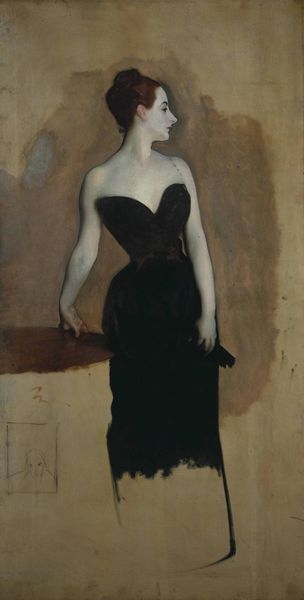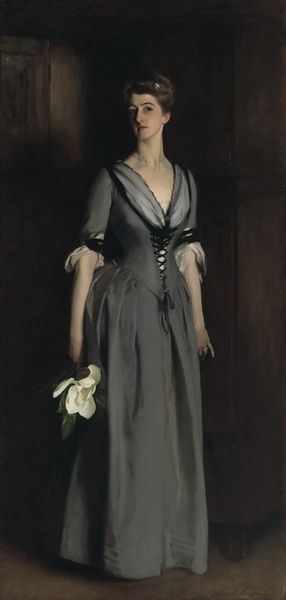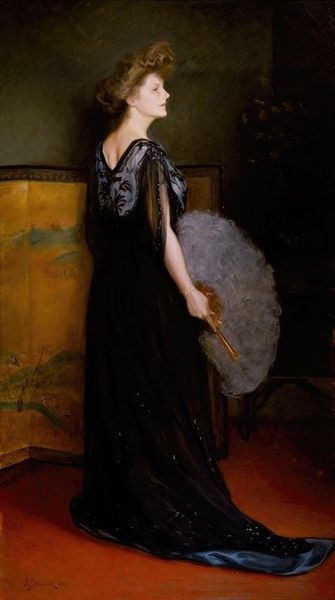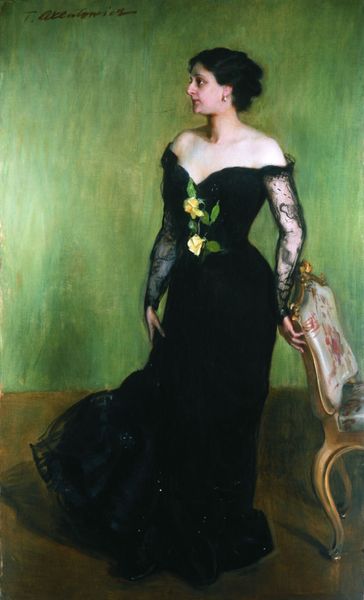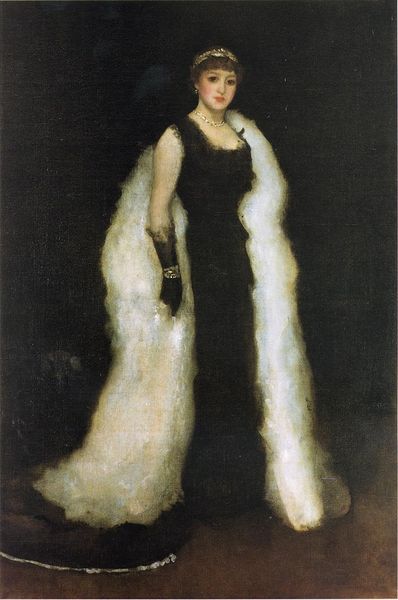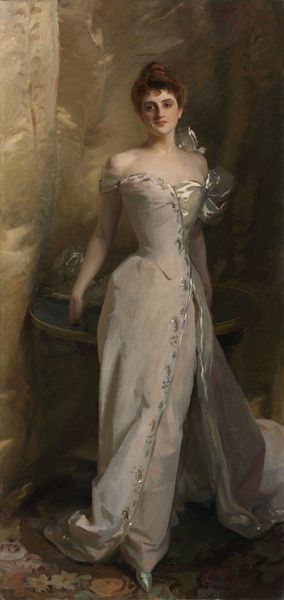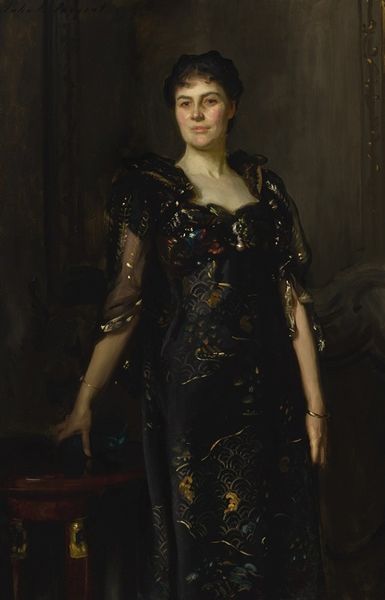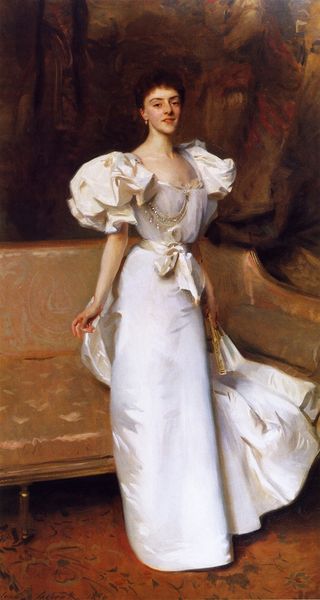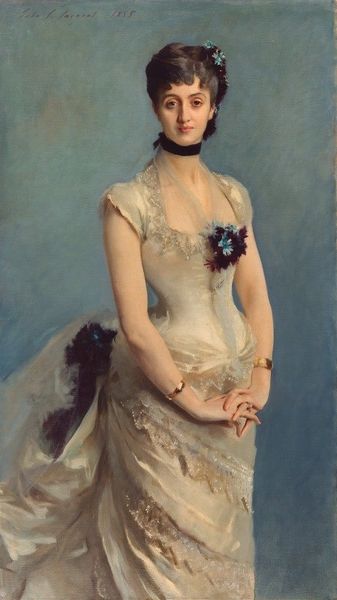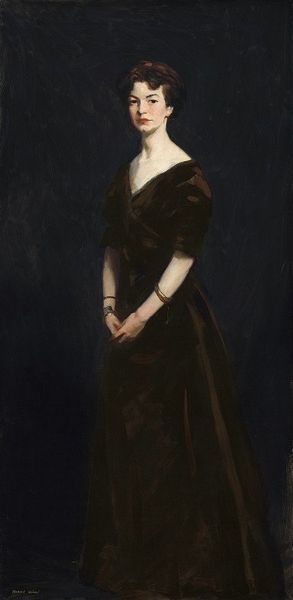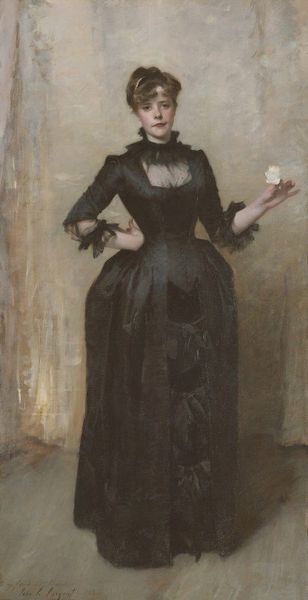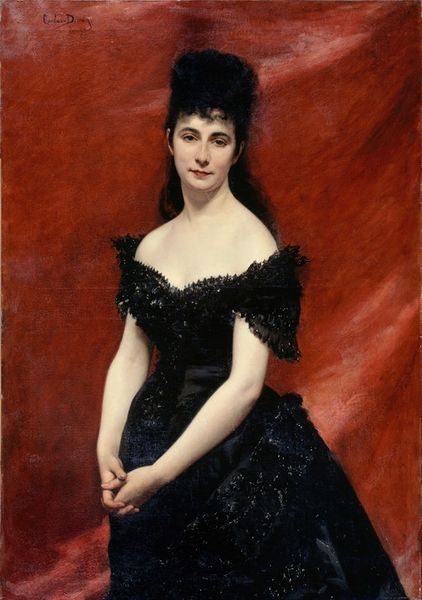
#
character pose
#
figurative
#
wedding photograph
#
white dress
#
green hue
#
green emphasis
#
green tone
#
green background
#
green
#
fashion model stance
#
celebrity portrait
Copyright: Public Domain: Artvee
Curator: Let's discuss John Singer Sargent’s "Madame X," painted in 1884. It portrays Virginie Amélie Avegno Gautreau, a prominent American expatriate in Parisian society. Editor: Immediately, I’m struck by the starkness of her figure against that muted background. The black dress… it's a bold statement, almost confrontational. There's an immediate sense of withheld story, a hidden narrative just beneath the surface. Curator: Indeed. Sargent used oil on canvas, employing layered glazes to achieve that luminous quality, particularly noticeable in the skin tones. He was meticulously crafting a specific persona, and the gown, though appearing black at first glance, reveals a sophisticated manipulation of light and shadow upon closer inspection. We understand, too, that it caused significant social drama: the original placement of the strap, slipping off her shoulder, was considered too provocative, so he reworked it. Editor: Ah, the shoulder strap! It became an emblem of a scandalous transgression. But, focusing on the symbols, consider the color black: it's simultaneously associated with mourning and high fashion, transgression and sophistication. This ambiguity is key. Look at her pale complexion and haughty profile, it speaks to aloofness. Even the table she leans upon has iconographic weight—a prop, almost, supporting her image of aristocratic detachment. Curator: Right, and the creation of such an image, this "aristocratic detachment," speaks to the industrialized production of status during this era. Sargent, though celebrated, was very conscious of his role as a commissioned portraitist for wealthy patrons. Consider also the pigment used for her dress: Did Sargent use commercially available black pigments, reflective of industrial advancements in color production, making dark, saturated colours accessible and affordable to many, or the most costly that money could buy? This impacts the dialogue with wealth. Editor: Interesting point about industrialized status and commercial color! But think, the symbolic tension of this portrait surely impacted the public. Her averted gaze refuses direct engagement, turning inward, towards secrets—real or perceived. "Madame X" isn't merely a likeness; it's a construction of mystery, a symbol of the impenetrable feminine mystique. The social reaction certainly proves my point! Curator: A fascinating portrait. The means of production reveal not just skill, but intention. Editor: I agree. It’s an iconic rendering that echoes across time, still challenging our notions of identity, privacy, and social decorum.
Comments
No comments
Be the first to comment and join the conversation on the ultimate creative platform.
